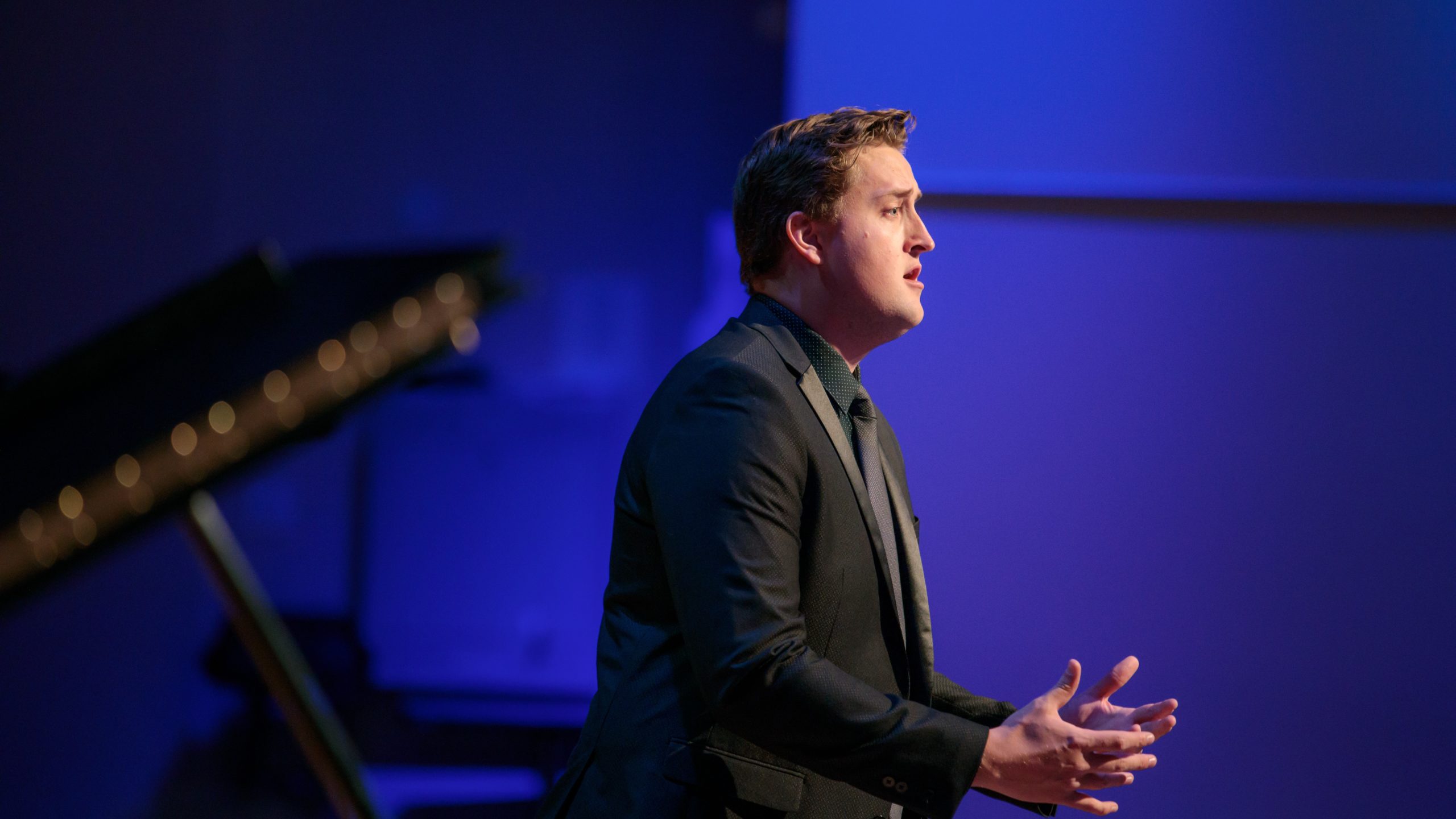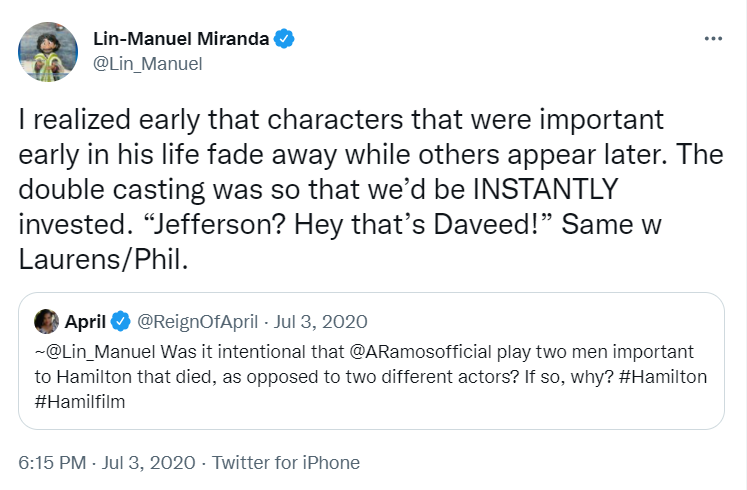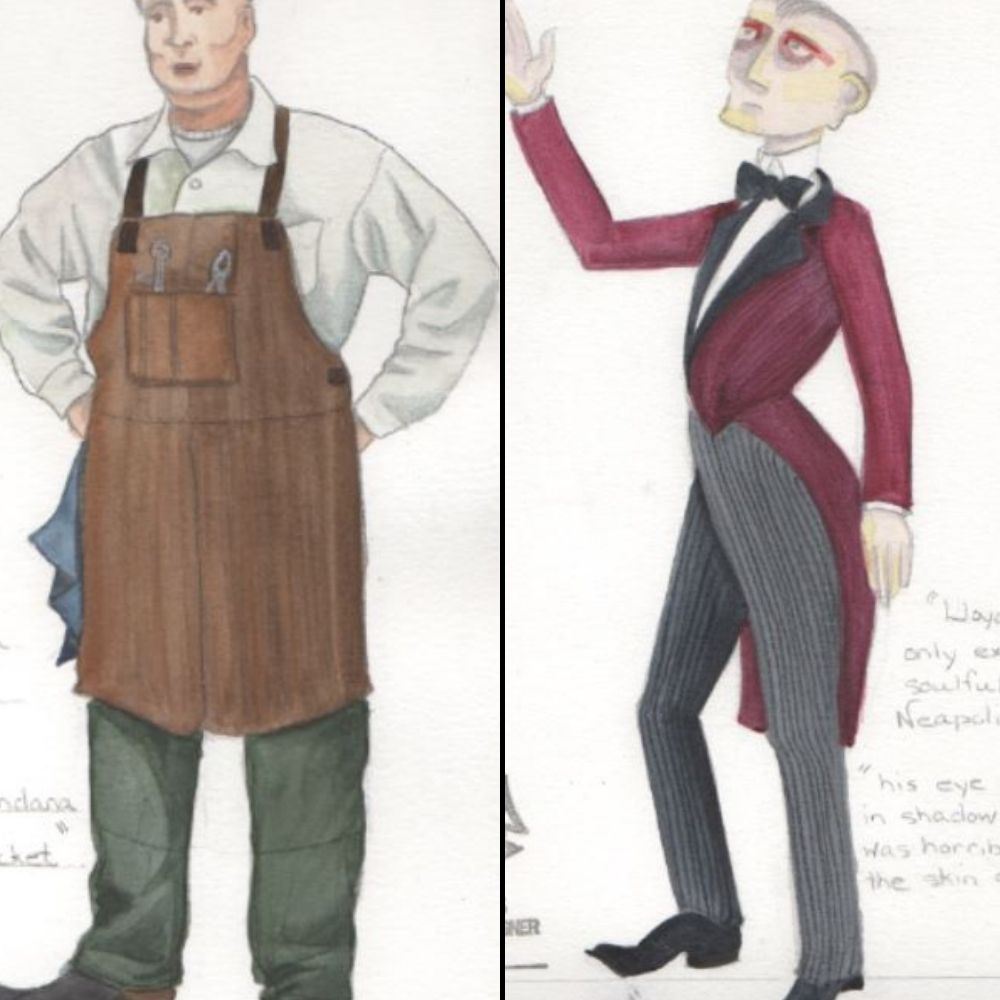Opera Explained: Doubling Roles

By: Jennifer Colgan
Why do we double roles?
Have you ever been enjoying a night at the theater or opera, and seen the same artist in multiple roles? It’s more common than you think. The reasons this happens are many and varied, but here are a few of the most common ones:
It adds to the dramatic impact
Role duality can serve a plot in so many ways—assisting with foreshadowing and impacting the audience’s relationship with the character, to name a few. The most recent and popular examples of this are the role dualities in Hamilton (Marquis de Lafayette/Thomas Jefferson, Hercules Mulligan/James Madison, Peggy Schuyler/Maria Reynolds, and John Laurens/Philip Hamilton). Lin-Manuel Miranda Tweeted, “I realized early that characters that were important early in his life fade away while others appear later. The double casting was so that we’d be INSTANTLY invested.”

Another classic example of someone who often utilized role duality is William Shakespeare. He often used it as a tool to create a meta-narrative and heighten the drama. For example, one actor originally doubled as Cordelia and the Fool in King Lear, which created a line of connection between them, underscoring the fact that they’re two of the few characters who tell the king the truth.
It’s a more appealing gig for the artist
A more challenging, complex job that might include multiple appearances as different characters in different parts of a production might be more of an attractive contract than a single, short appearance.
It’s a good use of resources
Let’s be honest—casting one person in two roles saves money, which is key for organizations that are trying to stretch their dollars. In this case, it’s not quite as meaningful to the plot and more about convenience.
Q&A with Spencer Lawrence Boyd
Our very own Artist in Residence, Spencer Lawrence Boyd, will be wearing multiple hats in our upcoming production of Moravec and Campbell’s The Shining, based on the novel by Stephen King. Learn more about his roles in this operatic thriller.
Tickets for Moravec & Campbell’s The Shining start at just $35>>
Tell us about the two roles you are portraying in The Shining.

My two roles are Bill Watson and Lloyd the Bartender. Audiences may remember Lloyd from the extended scene in the movie version of The Shining in which he causes Jack to slip up at the bar and coaxes him to feed into the tormented feelings already brewing inside. Lloyd is a ghost of the distant past, and he appears around halfway through the opera and then is intermittently involved throughout the remainder of the show.
Bill Watson is much more harmless. He is a descendant of the founder of The Overlook Hotel and serves as the hotel’s naïve caretaker during its operating season. His main objective in the opera is to stress the utmost importance of discharging excess steam from the boiler to Jack. During this scene, he also informs Jack on some specifics of the hotel’s former guests and employees who met rather tragic endings, including Delbert Grady, the hotel’s former winter caretaker. He doesn’t seem to recognize the paranormal relationship to these events other than the boiler giving him “the willies.” He and the rest of the regular staff are quick to get off to their winter vacations.
What are the challenges that come with preparing for and playing two roles?
The challenges that come with preparing and playing two roles are separating the musical inflection and manner of speech between the two characters and creating distinct flavors in the way that each character carries himself on, off, and around the stage, as everyone has their own way of moving around in everyday life. One other slight challenge in playing two roles for me specifically is that I am a very tall person, around 6’6”, so making sure the audience won’t instantly recognize me in my second appearance as Lloyd the Bartender is a serious task presented to our wonderful wardrobe, hair, and makeup department.
What are the special opportunities that come with preparing for and playing two roles?
I, personally, will be able to see the plot continue past my first character’s exit. I also get the chance to put on two completely different looks for this show, which will be a ton of fun!
Is this something you have done before in your career? If so, what were the roles?
The only other time I have played two roles was in a regional theater production of Joseph and the Amazing Technicolor Dreamcoat. I played Reuben, Joseph’s oldest brother, and the baker. This took place many years ago, but I vividly remember the feeling in the theater during final dress rehearsal when I was telling Joseph about his dream as the baker.
What are you most looking forward to in The Shining?
I am most looking forward to getting this massive set on stage and being able to explore the boiler room, bar, and the rest of our luxurious two-story Overlook Hotel! It will also be a lot of fun putting on the retro bartender look.
—
If you loved getting to know Spencer in this post, you will love seeing him perform TWO roles live and in person! Tickets for Opera Colorado’s February/March production of Moravec & Campbell’s The Shining are on sale now>>
—
What are your favorite examples of role dualities?


